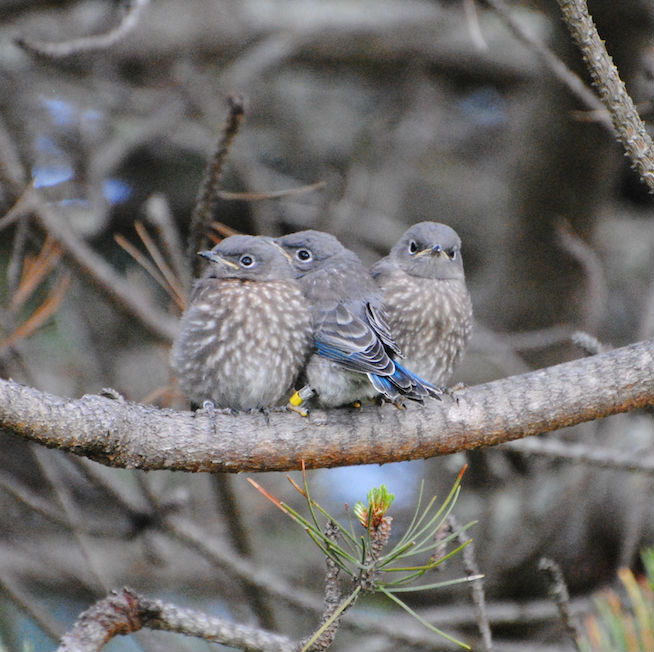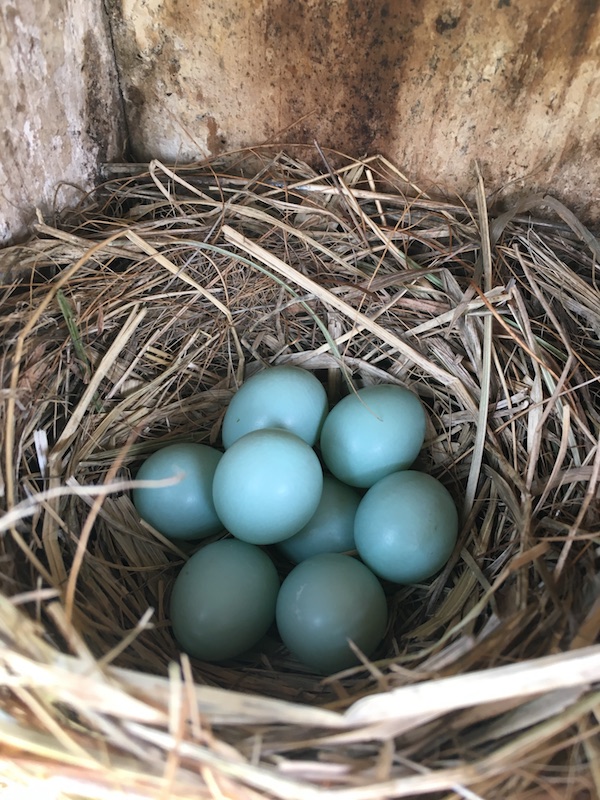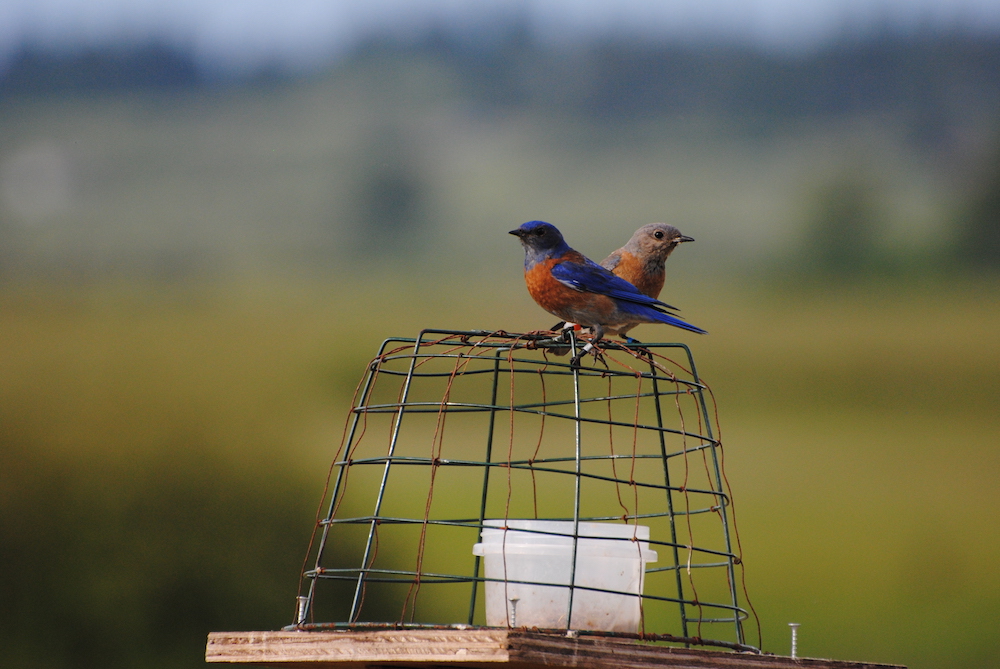
Fledglings on a branch | Genevieve Shank
The close of the 2018 breeding season marks the 12th consecutive season of the San Juan Islands Western Bluebird Reintroduction Project. As a result of the collective efforts of SJPT employees and local volunteers, 2018 has been the most successful breeding season since a population drop in 2013!
Here are some notable statistics and highlights:
Population Info
Nesting Pairs
● This year so far we’ve had a total of 13 nesting pairs (up from nine last year!)
Adults
● 26 total breeding adults
● Eight non-breeding adults
Nestlings and Eggs
● 55 banded nestlings (including aviary introduced)
● 32 eggs remaining
Translocations
● This season we have had 5 successful translocations!
● Two pairs that have successfully raised their first brood and working on their second as well as three families with a total of 16 juveniles.
● Note: All adults that were introduced re-nested on the island!
Predations
● This year despite intensive measures against predators, four breeding adults out of 26 went missing. One pair had a nest attacked by house sparrows but survived to re-nest on a different part of the island. We’re upgrading our predator guarding strategies to reduce loss in future years.
Highlights
● We had one breeding pair that should win the unofficial “Bird Parents of the Year Award” because they laid some extra-large clutches this season. Their first clutch had eight eggs and their second had seven! This is impressive considering the average clutch size is generally around four to six.
● There are plenty of hardworking bird parents this year, including one pair that is currently working on raising its third brood! Many other pairs are working on their second brood as well.
● A new recruit has been recorded on the island this year, a breeding female has come across from Vancouver Island (Cowichan Valley). Seeing the exchange of birds between Vancouver Island and the San Juans is always exciting because it means that there is promise of successful genetic exchange in the future.
● Five unbanded new recruits have showed up in breeding pairs this season. Although banded birds provide useful knowledge about their origin and movements, unbanded birds offer a sense of hope that more birds may have nested on the island in recent years without our help.

A large clutch | Genevieve Shank

Adult pair on a feeder | Genevieve Shank
